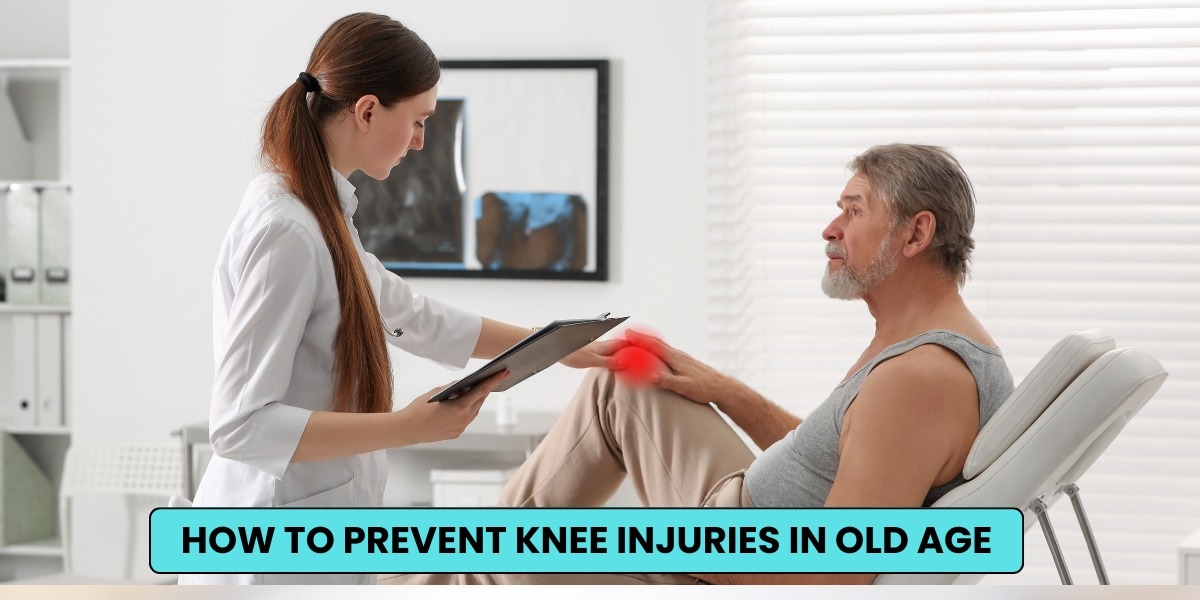As we age, our bodies naturally undergo changes that increase the likelihood of injuries, particularly in weight-bearing joints like the knees. The knee joint, being one of the most complex and crucial joints in the human body, is highly susceptible to wear, tear, and injury, especially in older individuals. Understanding the most common knee injuries, their symptoms, and treatments is key to promoting mobility and maintaining quality of life.
Why Are Knee Injuries Common in Older People?
The knee joint is a complex structure comprising bones, cartilage, ligaments, tendons, and muscles. Over time, the repetitive use of this joint can lead to degenerative changes, making it prone to injuries. Factors contributing to knee injuries in older people include:
- Age-related degeneration: Cartilage wears down, leading to conditions like osteoarthritis.
- Reduced muscle strength: Weak muscles can result in less joint support.
- Decreased bone density: This makes the bones more prone to fractures.
- Lifestyle factors: Sedentary habits or excessive strain due to physical activity.
The Most Common Knee Injuries in Older People
1. Osteoarthritis
Osteoarthritis (OA) is the leading cause of knee pain in older people. It occurs when the protective cartilage in the knee joint wears away over time, leading to bone-on-bone friction.
- Symptoms: Pain, stiffness, swelling, and reduced mobility. Symptoms often worsen with activity and improve with rest.
- Treatment: Nonsteroidal anti-inflammatory drugs (NSAIDs), physical therapy, weight management, and, in severe cases, knee replacement surgery.
2. Meniscal Tears
The menisci are crescent-shaped pieces of cartilage that cushion the knee joint. With age, these structures become brittle and can tear even with minor twists or strains.
- Symptoms: Sharp pain, swelling, stiffness, and a sensation of the knee “locking.”
- Treatment: Rest, ice, physical therapy, and sometimes arthroscopic surgery.
3. Ligament Injuries
Ligament injuries in older adults often involve the anterior cruciate ligament (ACL) or medial collateral ligament (MCL). While these injuries are more common in younger, active individuals, older adults may experience partial tears or sprains due to weakened ligaments.
- Symptoms: Instability, swelling, and difficulty bearing weight.
- Treatment: Bracing, physical therapy, and, in severe cases, surgery.
4. Patellofemoral Pain Syndrome (PFPS)
Also known as “runner’s knee,” PFPS is caused by irritation of the cartilage under the kneecap. It can occur due to overuse, misalignment, or weakened thigh muscles.
- Symptoms: Aching pain around or behind the kneecap, especially during activities like climbing stairs or squatting.
- Treatment: Strengthening exercises, stretching, and orthotics to improve alignment.
5. Bursitis
Bursitis occurs when the small fluid-filled sacs (bursae) that cushion the knee joint become inflamed. It is often caused by repetitive kneeling or trauma.
- Symptoms: Swelling, warmth, tenderness, and pain localized to the affected area.
- Treatment: Rest, ice, compression, and in some cases, corticosteroid injections.
6. Tendonitis
Tendonitis, particularly patellar tendonitis, is inflammation of the tendons that connect muscles to bones. It can result from overuse or sudden increases in physical activity.
- Symptoms: Pain just below the kneecap, especially during movement.
- Treatment: Rest, anti-inflammatory medications, and strengthening exercises.
7. Fractures
Fractures around the knee, such as patellar fractures, are more likely in older adults with osteoporosis. A fall or trauma often triggers this injury.
- Symptoms: Severe pain, swelling, and an inability to straighten the knee.
- Treatment: Immobilization, physical therapy, and surgery in severe cases.
How to Prevent Knee Injuries in Old Age
1. Maintain a Healthy Weight
Excess weight places added stress on the knee joint, accelerating cartilage wear and tear. Maintaining a healthy weight reduces the risk of injuries and conditions like osteoarthritis.
2. Stay Active
Low-impact exercises such as walking, swimming, and cycling help improve joint mobility, strengthen muscles, and enhance flexibility. Regular physical activity keeps the knees strong and less prone to injuries.
3. Strengthen Supporting Muscles
Targeted exercises to strengthen the quadriceps, hamstrings, and calf muscles provide additional support to the knee joint.
4. Use Proper Footwear
Wearing supportive and well-cushioned shoes can help align the body and reduce stress on the knees.
5. Avoid Overexertion
While staying active is essential, overexertion can lead to injuries. Always listen to your body and avoid activities that cause pain or discomfort.
6. Modify Risky Activities
Activities like climbing stairs, squatting, or kneeling for extended periods should be modified to reduce strain on the knees.
Treatment and Management of Knee Injuries
Effective treatment for knee injuries often depends on the severity and type of injury. Common approaches include:
- R.I.C.E. Method: Rest, Ice, Compression, and Elevation for acute injuries.
- Physical Therapy: Tailored exercises to strengthen the knee joint and improve mobility.
- Medications: NSAIDs for pain and inflammation.
- Injections: Corticosteroids or hyaluronic acid for severe pain and inflammation.
- Surgical Interventions: Arthroscopy or total knee replacement for advanced cases.
When to Consult a Specialist
Prompt medical attention is crucial for knee pain that persists, worsens, or affects mobility. Early diagnosis and treatment can prevent complications and improve outcomes.
Consult Dr. Murtaza Adeeb is a highly skilled and renowned knee replacement doctor in Pune, offering advanced treatment solutions for knee pain and joint disorders. With extensive experience in performing successful total knee replacement surgeries







